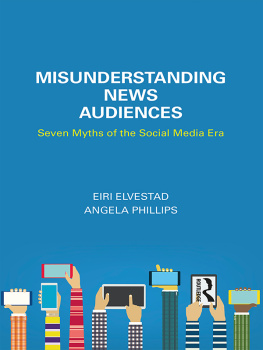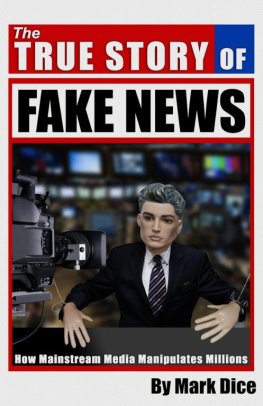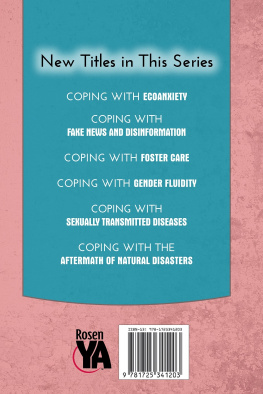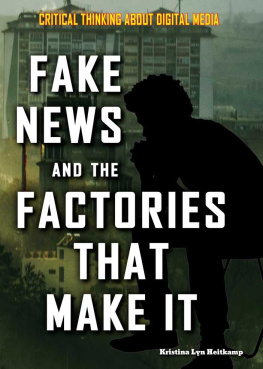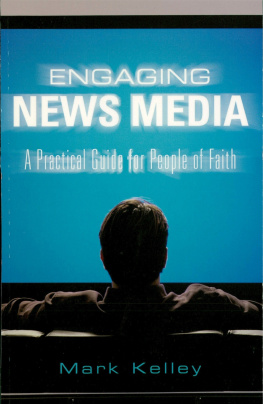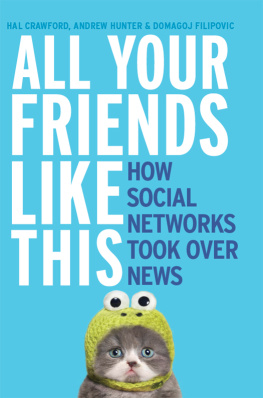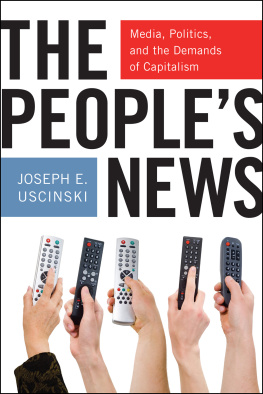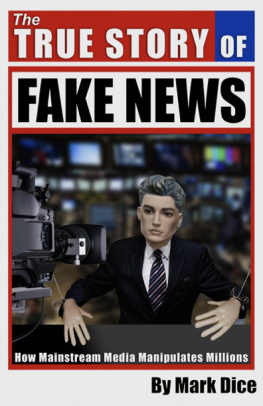MISUNDERSTANDING NEWS AUDIENCES
Misunderstanding News Audiences interrogates the prevailing myths around the impact of the Internet and social media on news consumption and democracy. The book draws on a broad range of comparative research into audience engagement with news, across different geographic regions, to provide insight into the experience of news audiences in the twenty-first century.
From its inception, it was imagined that the Internet would benignly transform the nature of news media and its consumers. There were predictions that it would, for example, break up news oligarchies, improve plurality and diversity through news personalisation, create genuine social solidarity online, and increase political awareness and participation among citizens. However, this book finds that, while mainstream news media is still the major source of news, the new media environment appears to lead to greater polarisation between news junkies and news avoiders, and to greater political polarisation. The authors also argue that the dominant role of the USA in the field of news audience research has created myths about a global news audience, which obscures the importance of national context as a major explanation for news exposure differences.
Misunderstanding News Audiences presents an important analysis of findings from recent audience studies and, in doing so, encourages readers to re-evaluate popular beliefs about the influence of the Internet on news consumption and democracy in the West.
Eiri Elvestad is Associate Professor of Sociology at the University College of Southeast Norway. She is the author of two books, including one concerned with Norwegian adolescents relationship to news, and she has written several articles in international journals about the changing media environment and news exposure.
Angela Phillips is Professor of Journalism at Goldsmiths, University of London, UK. She worked as a journalist for print and online publications, as well as in broadcasting, before focusing on academic research in ethical working practices and news audiences. Her last book was Journalism in Context (2015).
COMMUNICATION AND SOCIETY
Series Editor: James Curran
This series encompasses the broad field of media and cultural studies. Its main concerns are the media and the public sphere: on whether the media empower or fail to empower popular forces in society; media organisations and public policy; the political and social consequences of media campaigns; and the role of media entertainment, ranging from potboilers and the human-interest story to rock music and TV sport.
Gender and Media
Representing, Producing, Consuming
Tonny Krijnen and Sofie Van Bauwel
Misunderstanding the Internet
Second edition
James Curran, Natalie Fenton and Des Freedman
Africas Media Image in the 21st Centur
From the Heart of Darkness to Africa Rising
Edited by Mel Bunce, Suzanne Franks and Chris Paterson
Comparing Political Journalism
Edited by Claes de Vreese, Frank Esser, and David Nicolas Hopmann
Media Ownership and Agenda Control
The Hidden Limits of the Information Age
Justin Schlosberg
An Introduction to Political Communication
Sixth edition
Brian McNair
Misunderstanding News Audiences
Seven Myths of the Social Media Era
Eiri Elvestad and Angela Phillips
For a complete list of titles in this series, please see: https://www.routledge.com/series/SE0130
MISUNDERSTANDING NEWS AUDIENCES
Seven Myths of the Social Media Era
Eiri Elvestad and Angela Phillips
First published 2018
by Routledge
2 Park Square, Milton Park, Abingdon, Oxon, OX14 4RN
and by Routledge
711 Third Avenue, New York, NY 10017
Routledge is an imprint of the Taylor & Francis Group, an informa business
2018 Eiri Elvestad and Angela Phillips
The right of Eiri Elvestad and Angela Phillips to be identified as authors of this work has been asserted by them in accordance with sections 77 and 78 of the Copyright, Designs and Patents Act 1988.
All rights reserved. No part of this book may be reprinted or reproduced or utilised in any form or by any electronic, mechanical, or other means, now known or hereafter invented, including photocopying and recording, or in any information storage or retrieval system, without permission in writing from the publishers.
Trademark notice: Product or corporate names may be trademarks or registered trademarks, and are used only for identification and explanation without intent to infringe.
British Library Cataloguing-in-Publication Data
A catalogue record for this book is available from the British Library
Library of Congress Cataloging in Publication Data
Names: Elvestad, Eiri, author. | Phillips, Angela, author.
Title: Misunderstanding news audiences : seven myths of the social media era / Eiri Elvestad and Angela Phillips.
Description: New York : Routledge : Abingdon, Oxon, 2018. | Includes bibliographical references and index.Identifiers: LCCN 2017047028 | ISBN 9781138215184 (hardback : alk. paper) | ISBN 9781138215191 (pbk. : alk. paper) | ISBN 9781315444369 (ebook)
Subjects: LCSH: News audiences--History--21st century. | Journalism--History--21st century. | Journalism--Technological innovations. | Social media.
Classification: LCC PN4784.N48 E48 2018 | DDC 302.23--dc23
LC record available at https://lccn.loc.gov/2017047028
ISBN: 978-1-138-21518-4 (hbk)
ISBN: 978-1-138-21519-1 (pbk)
ISBN: 978-1-315-44436-9 (ebk)
We owe thanks to many people but first of all to Mira Feuerstein who initiated our research project into students use of news in 2013 and brought us together. Thank you also to Aeron Davis, Olivia Solon, Natalie Fenton, Terry Kirby and Arild Danielsen for reading early drafts, and to the anonymous reviewers who read the proposal and the whole manuscript and gave useful comments. And finally to Mike and Even for listening, discussing, passing on links, reading drafts and everything else. This book has been a true collaboration. Like all good collaborations it has been by turns infuriating and enlightening and we have been for each other perhaps the most exacting critics of all. We both look forward to working together in the future.
We started out to produce a book that would de-bunk some of the prevailing myths about the Internet and its impact on news audiences. By the time we finished, we found ourselves engaged in drawing together the empirical and intellectual underpinning of one of the most important debates of our time, as concerns that had been circulating in the academic community, about the impact of personalised information systems on democracy, were catapulted into the mainstream by a series of elections across Europe and the USA.
Our initial concern had been to explore a gap in the literature. While there was a great deal of research on the use of different platforms to find news, there seemed to be little information about what news was being found there, where it came from and who was producing it. We started our own research (with Mira Feuerstein) into students use of news in three national contexts (Elvestad, Phillips, & Feuerstein, 2017). This was a small study, using mixed methods, carried out in 2014.1 Our intention was to examine the ways in which students access news, what news sources they trusted, what sources they tended to use, and whether and under what circumstances they interacted with news. Alongside surveys we carried out in-depth interviews with students who were selected to produce a varied sample in terms of study programme, gender, age, and ethnicity. We refer to the in-depth interviews with the 12 Norwegian and 12 UK students in the study in this book as our interviews. We are of course aware that this is a small sample but where we find these interviews help to provide insight into news audiences and democracy in the social media era, we have included them.

